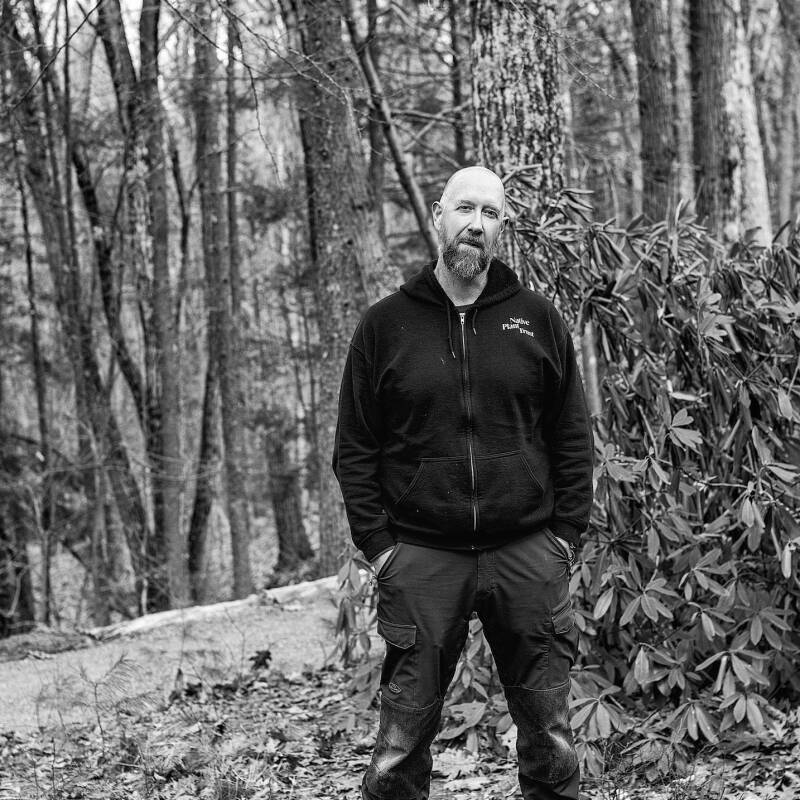This is part of a series with Perfect Earth Project, a nonprofit dedicated to toxic-free, nature-based gardening, on how you can be more sustainable in your landscapes at home.
“Mother nature is the ultimate landscape designer. We’re just her helpers,” says Emilia deMauro, who, along with her sister Anna, runs the East Hampton, NY, landscape design firm deMauro + deMauro. Their approach to design is imbued with a sense of community and responsibility to preserve the beauty of the native environment.
The sisters grew up shuttling between the rolling hills of rural Northeastern Pennsylvania, where their artist dad lived, and the farm fields and overgrown thickets of the east end of Long Island, where their mother was farming and gardening. “Both of those landscapes play a huge part in our designs,” says Anna, who studied at the Florence Academy of Art in Italy. “There’s something so beautiful in the wildness. We’re constantly pulling from those memories.”
They found kindred spirits in architect Nick Martin and his wife Christina. The couple believed strongly in “pivoting away from green lawns that require chemicals and continual labor, and, most important, that strip our community of habitat for creatures big and small,” says Christina. They hired the sisters to design the landscape outside of Martin Architects, Nick’s new Bridgehampton office on the Montauk highway. A busy thoroughfare, situated just past a gas station and across from a bank, didn’t deter them from achieving their joint vision: a self-sufficient oasis, lush with native plants and alive with birds, butterflies, and wildlife, that looks beautiful year-round.
Photography by Doug Young, courtesy of deMauro + deMauro, unless otherwise noted.

The property was neglected when the Martins bought it. “To transform the space, we removed the asphalt driveway, regraded the land because the pitch was so bad, with the goal that it wouldn’t need irrigation,” says Nick. He also tried to reuse as many materials as possible.

For the front-yard meadow, which is 90 percent native, the deMauros handpicked every single plant. They had roughly plotted out a matrix on paper in the office before “throwing it all up in the air come planting time,” says Anna, with a laugh, of their instinctual process. “Something happens when you lay out a garden,” adds Emilia. “There’s a little chaos and unknown in nature and that’s where the fun happens. You can’t be too rigid.”

While the garden is not even a year old, it already has become an attraction for wildlife and humans alike. The Martins have spotted an uncommon Henry’s Elfin butterfly and specialized native bees like Colletes banksi. (For more on the importance of native bees, see Have You Seen Me? A Guide to the Native Bees at Risk of Extinction.) “The meadow has become a haven for insects and birds, all sharing space,” says Christina, who is also studying biodynamic gardening.

It’s also attracted the attention of people, including Perfect Earth Project founder Edwina von Gal, who recently was compelled to step on the brakes while driving by to find out more. She’s not the only one. “We have friends stopping by to ask about our plant lists,” says Christina. “That’s the whole idea. We want to share our garden and inspire as many people as possible because the more people who do this, the better.”

The deMauros are encouraged that aesthetics are shifting. “People want to do the right thing,” says Emilia. She and her sister have seen how frustrated people are with the time, money, and effort to keep green lawns and clipped hedges. “It’s important to have these conversations. No one needs a ‘perfect’ lawn. We want to show people that they can have habitat on their property and it can be beautiful.”

See also:
- 6 Nature-Based Garden Tasks for Fall
- ‘Stop Putting Your Garden into Shapewear’: 12 Tips for Nature-Based Gardening
- Garden Visit: Out with the Lawn, In with the Native Plants












Have a Question or Comment About This Post?
Join the conversation (2)